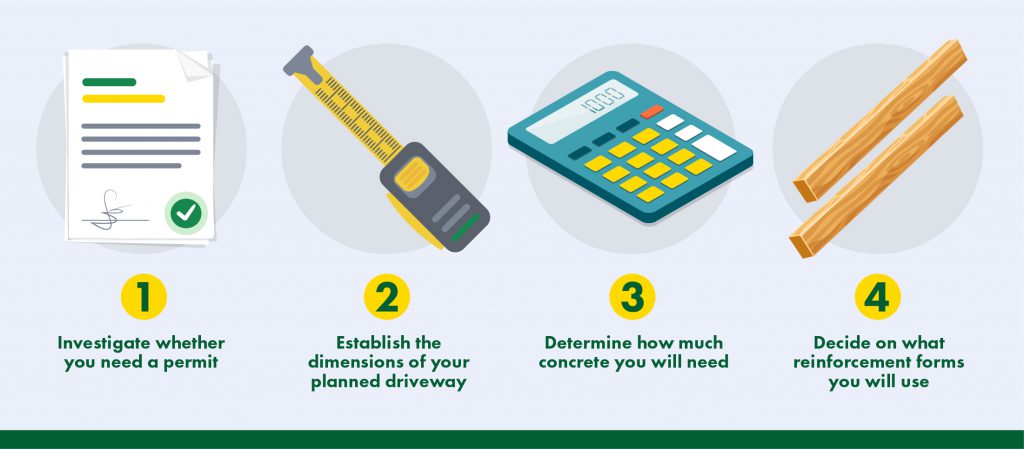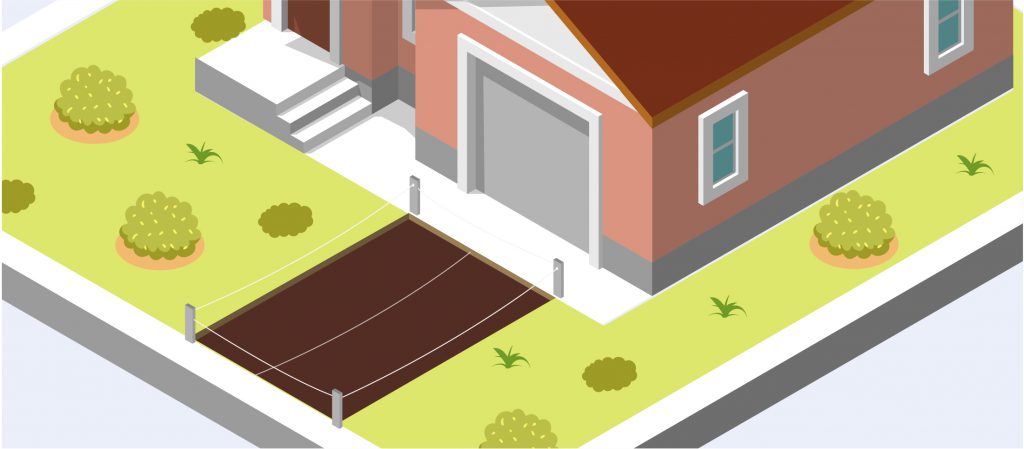How to Build a Concrete Driveway
As a material, concrete is strong, long-lasting and affordable. All of these traits make it ideal for use in driveways.

In this article, we’ll cover all the ins and outs of building a concrete driveway, mistakes you should avoid, and also the pros and cons of choosing a concrete driveway.
What concrete should I use for a concrete driveway?
Naturally, driveways will experience plenty of vehicle traffic on a daily basis. Not all concrete is the same, so discuss your plans with your chosen concrete supplier and they should be able to advise on a domestic concrete mix that is both high quality and can withstand the day-to-day demands.
Planning and preparation
Don’t just launch into the project with no strategy; underestimating could impact the quality and usability of the final result. Start by making a plan. Here are the first steps you will need to consider before the pouring stage.
- Investigate whether you need a permit. This will depend on where you live and the scope of your project.
- Establish the dimensions of your planned driveway. You can do this through using measurement tools, such as tape measures or a measuring wheel. You can then sketch out a plan of the dimensions for you to work from.
- Determine how much concrete you will need, based on these dimensions. Convert your measurements to cubic yards, and this will tell you how much concrete you will require.
- Decide on what reinforcement forms you will use, along with any stakes and establish how many you will need.

Laying the groundwork
Next, it’s time to prepare the groundwork.
- Dig down around 10 cm (you may need to dig further if the ground is poor).
- Kill off any plants or weeds with weedkiller.
- A concrete drive will need a suitable, level base to lie on to support it, created from fill material or soil. It should be the right balance of materials to ensure it’s not too loose and is firm enough to support the soil. Make sure your chosen subsurface is nice and flat.
- Establish the layout of your driveway by driving stakes to mark the edges – use your plan to guide you. Erect boundaries to keep the concrete within the intended area. If these boundaries are temporary, you will need to ensure they can be released easily with the use of a release agent.
- Now it’s time to grade, making sure that the concrete will be at a consistent thickness across the driveway – tie a string along the top of your forms and measure down to the soil, ensuring that the depth is consistent all the way along. If not, even it out with extra material.
- You can add further reinforcement if you deem it to be necessary, including reinforcement bars.

Pouring and laying
- Use a reliable, professional concrete supply company to deliver the right quantity of premium mix concrete. Here at Neil Sullivan & Sons, we provide a wide range of concrete grades for any purpose and for any size of job. We ensure you only pay for what you use, making this a cost-effective option.
- We deliver concrete directly to your site for total convenience and will pump it into your exact location with ease.
- Level it out with levelling tools or rakes to avoid any dips forming that could cause water pooling on your driveway.
Curing the concrete
The curing process begins the moment you lay your concrete. Once the previous steps have been completed, place a sheet over the concrete while it continues to cure – this is to protect it from extreme. Once fully cured, the temporary boundaries around the edges can be removed.

Pros of a concrete driveway
Why might a concrete driveway benefit you and your property?
- Very long-lived and will not need replacing for around 30 – 50 years
- A highly affordable option, especially since you may only need to have the driveway installed once in your lifetime thanks to its longevity
- Extremely strong a durable option that can easily withstand the weight of vehicles
Cons of a concrete driveway
What are the drawbacks of a concrete driveway?
- Laying a driveway yourself can be hard work if you are not DIY-savvy. Instead, consider getting some professionals on board to complete the job to a high quality standard
- Concrete on its own is not the most interesting to look at, which is why homeowners are considering stamping and imprinted options to inject some personality into their driveway
- It will require maintenance in the form of an annual resealing
Common mistakes to avoid
So, now we’ve described how to lay a driveway successfully, here are some common mistakes to avoid.
- Don’t remove the formwork or boundaries too early
- Attempting the job when you don’t have the correct skills or tools – in this case, always have a professional lay your driveway on your behalf
- Always make sure that you leave the concrete to cure for as long as it needs
- Always prepare for any weather conditions, and adapt your method each time
- Choose the correct concrete mix for your job – Neil Sullivan & Sons can advise on the best concrete mix for your needs, before mixing it to your specifications
If you’re seeking top quality concrete mixes for your concrete driveway, look no further than Neil Sullivan & Sons. We offer same and next day delivery across Essex and beyond, and you only pay for exactly what you use – saving you money and resources. For more information, please contact our friendly team today.